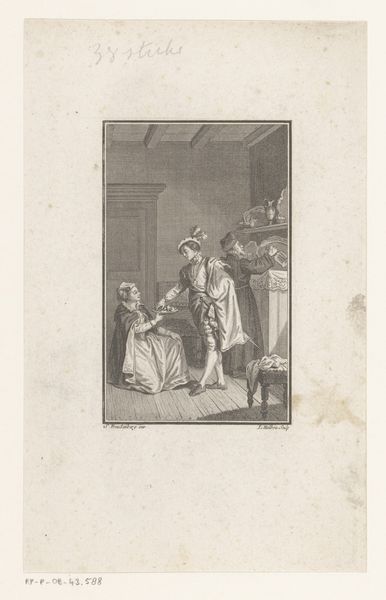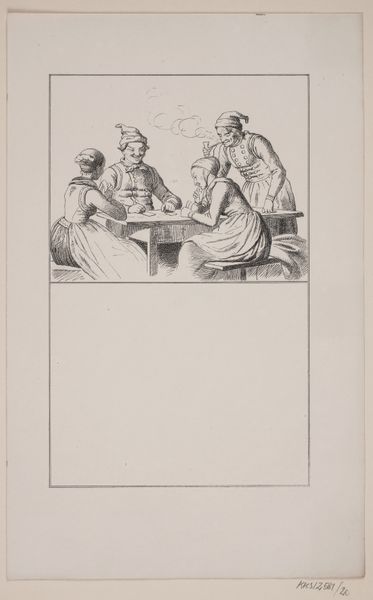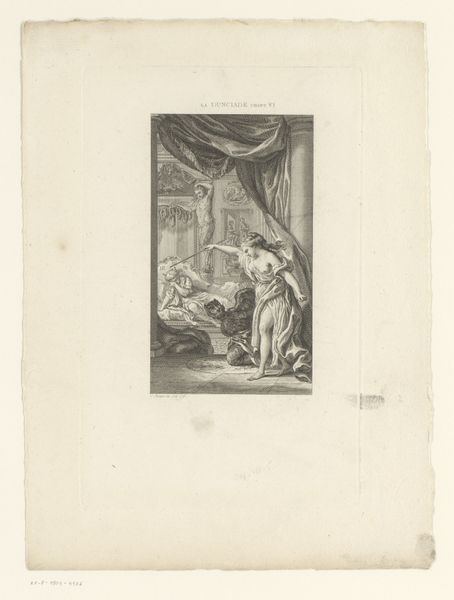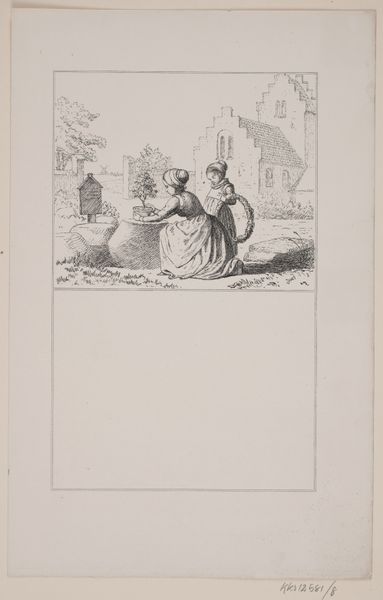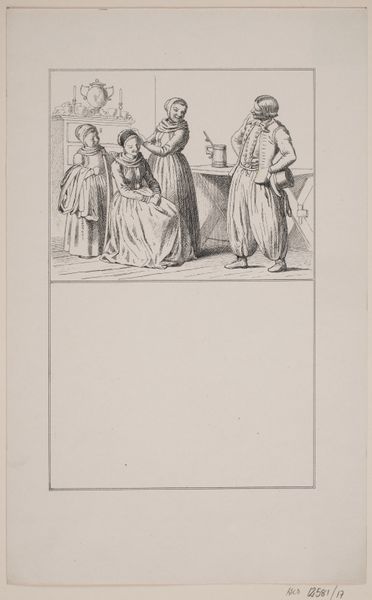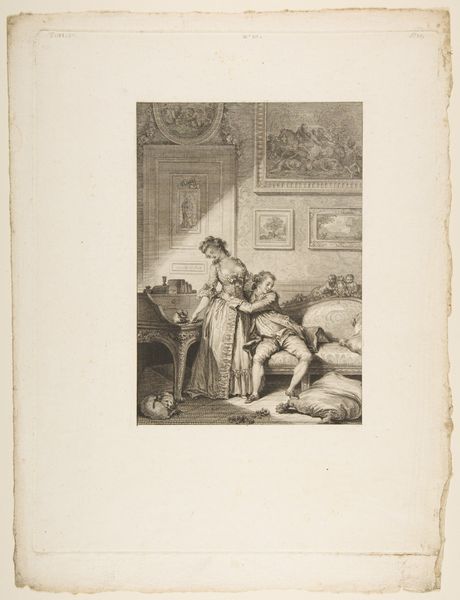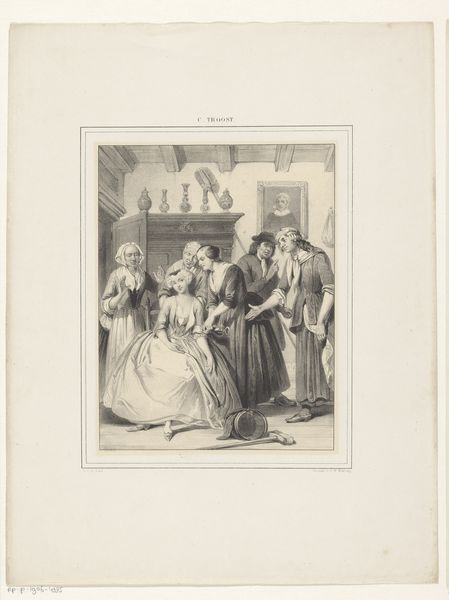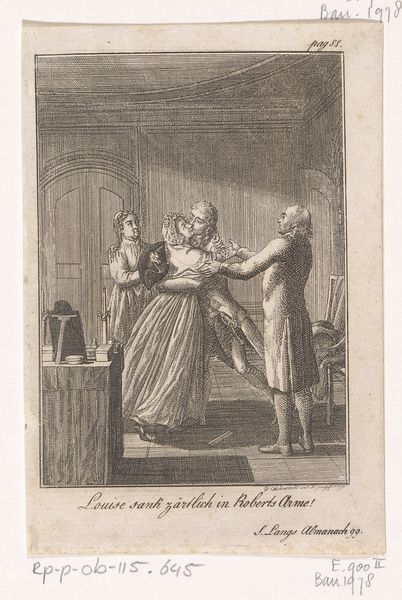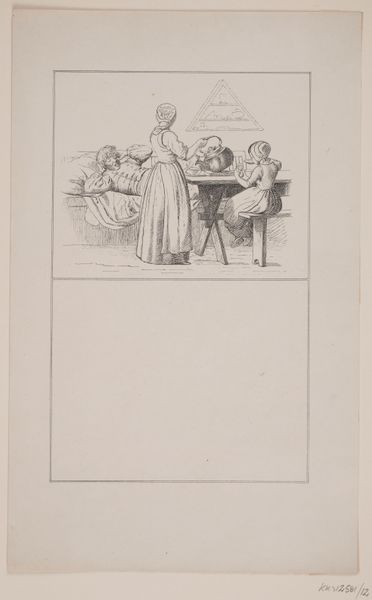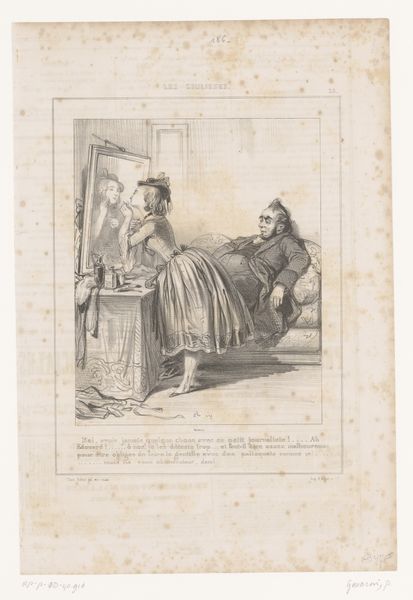
drawing, lithograph, print
#
portrait
#
drawing
#
lithograph
# print
#
genre-painting
Dimensions: 262 mm (height) x 165 mm (width) (brutto)
Curator: Look at this intriguing print, a lithograph titled "Guess Again," or "Gæt engang" by Adolph Kittendorff, created around 1862. Editor: It strikes me as…staged. Like a play frozen in time. The dramatic lighting emphasizes their somewhat rough clothes and makes me think of daily life—not idealized beauty. Curator: That’s a perceptive observation. Kittendorff was indeed part of a larger artistic movement turning toward genre painting and documenting the lives of ordinary people. The narrative element is key here. The title itself suggests a small drama unfolding. We see class dynamics represented—the visual rhetoric being consumed in its time. Editor: It's amazing what the lithographic process allows. The lines are so precise, yet there’s a softness, especially in the shading. It’s almost tactile; I want to touch those thick wool skirts and that carved table! And consider what would've been required to achieve this replication-- what stones were used and who transported the equipment? What was their compensation? Curator: The use of printmaking techniques democratized art by making it accessible to a wider audience, which aligns with its themes portraying the average folk. I'm curious how gender roles might’ve been read. Notice how the woman who's the center of attention occupies a static role, but then, look at the other woman’s hand blocking his guess. What does this say about gender norms within the social contexts surrounding daily interactions? Editor: Perhaps it also touches upon work as material; how spinning yarn for clothes-making impacts class or gender, since clothing has always had economic connections, whether luxurious textiles for high class, or plain for daily function as seen here. But those clothes look too bulky—I can't imagine working efficiently. Curator: Indeed, you've brought forth its many fascinating facets. Kittendorff gives us a tableau that not only reveals daily life and cultural dynamics from mid-19th-century Denmark but encourages us to question norms about what we consume. Editor: Right, from both material and cultural angles. Thanks, everyone, for helping to put this picture together.
Comments
No comments
Be the first to comment and join the conversation on the ultimate creative platform.
